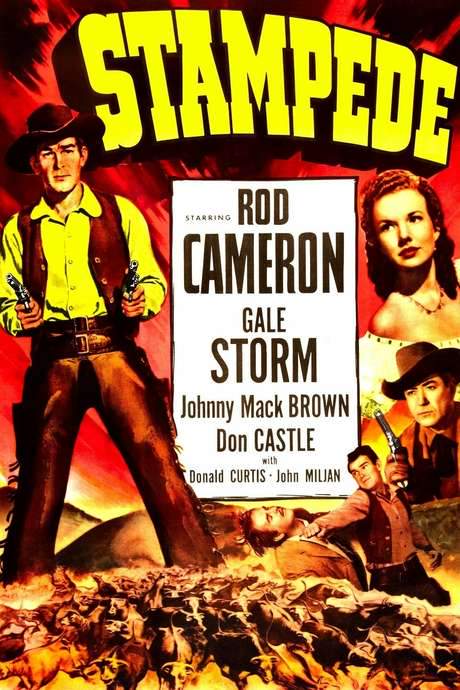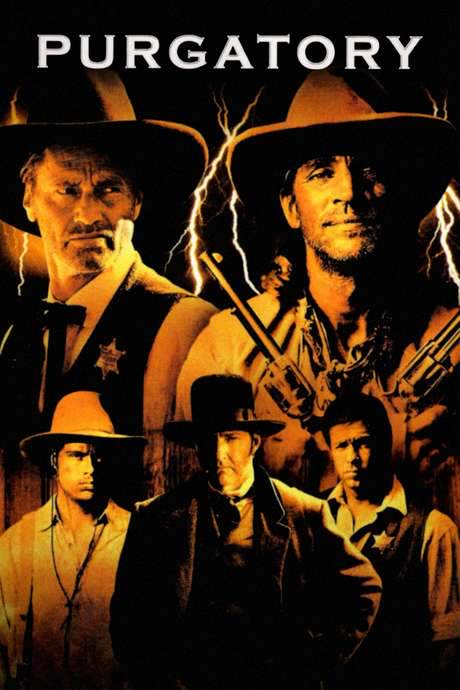
Western Religion
Year: 2015
Runtime: 106 mins
Language: English
Director: James O’Brien
In 1879, skilled gunfighters from around the world gather in the Arizona town of Religion to participate in a renowned poker tournament. Attracted by a substantial gold prize, these players soon discover that the stakes are far higher than money; their very souls are on the line in this high-stakes competition.
Warning: spoilers below!
Haven’t seen Western Religion yet? This summary contains major spoilers. Bookmark the page, watch the movie, and come back for the full breakdown. If you're ready, scroll on and relive the story!
Western Religion (2015) – Full Plot Summary & Ending Explained
Read the complete plot breakdown of Western Religion (2015), including all key story events, major twists, and the ending explained in detail. Discover what really happened—and what it all means.
In Religion, Arizona, a harsh desert town becomes the stage for a high-stakes poker tournament where players gamble more than money—they stake their souls on the turn of a card. The film opens in 1879 with a mosaic of quick, interwoven glimpses that tease the backstories of the core players. The gunslinger Claude Duhamel as Anton Stice moves through this world with a shadowed past, having already killed four men over a seemingly petty insult. Nearby, Peter Shinkoda plays Chinaman Dan, a wanted bank robber whose presence signals that the game will draw danger as well as fortune. A third figure, Salt Peter, brings a sly, dapper energy to the tent city of Religion, all while a backdrop of dust, heat, and the clink of poker chips sets the mood.
At the center of this convergence is Harvard Gold, the town entrepreneur who hosts the “first annual” poker game as a clever way to drum up business and thrust Religion onto the map. The event is documented by Edward James of the New York Times, providing a modern observer’s lens on a frontier spectacle. The Last Chance Saloon serves as the tournament’s nerve center, its doors open to a procession of hopefuls and misfits who have traveled far for a taste of luck and legend. Among them are Waylin Smith, a spiritual “half injun” joined by his Apache guide, and a magician named Raven McCabe whose tricks hint at a world just beyond the fold of the cards. A carpenter named Bobby Shea rounds out the rough-and-tumble crowd, while Bootstrap Bess—the formidable madam of Bill’s house—has her own sharp interests in the prize: a large, ornate cross forged of pure gold.
The stage is set, the stakes are colossal, and the air crackles with competing ambitions. The Last Chance Saloon becomes a crucible where alliances form and fractures appear in equal measure, as the dozens of gold seekers collide under the watchful eye of Religion’s rough-hewn hospitality. The cross that Bootstrap Bess yearns to claim stands not merely as a trophy but as a symbol of what each player believes they deserve or fear to lose. As the tournament unfolds, the crowd watches the dynamic between Anton Stice and his fellow competitors tighten, their tensions bubbling toward a tipping point that could redefine what each man is willing to risk for glory—or redemption.
Among the players, Anton Stice moves with a studied, almost clinical charm, approaching each opponent with a proposition—offering the cross as if it were his to bestow. Yet a subtler current threads through the proceedings: Saint John, a reformed outlaw turned itinerant preacher, hints at a reckoning to come. The potential for old sins to resurface adds a layer of moral gravity to every hand dealt and every bluff uttered in the dim glow of lamps and the hum of whispered bets. The tournament is never merely about winning; it is about the possibility that one’s fate can be redirected by a moment of risk in a town where every decision feels like a vote on the soul.
As the cards fly and tempers flare, the film keeps its focus on the psychology of competition—the way men posture, negotiate, and press their luck when the reward is a gold cross that gleams with more weight than mere currency. The interplay between Stice’s threatening confidence, Dan’s wary evasions, and Gold’s strategic manipulations creates a layered, slow-burn tension that sustains the narrative beyond the surface spectacle of a frontier poker game. The atmosphere—dusty, tense, and ripe with possibility—invites viewers to consider what it truly means to win when every victory carries a cost and every loss threatens to redefine who you are.
In the end, the story offers a meditation on ambition, fate, and the uneasy line between redemption and ruin. The poker table in Religion is portrayed not just as a place to win wealth, but as a stage where choices ripple outward, reshaping lives and futures in ways that linger long after the final hand is sealed. The characters—bound by pasts, present wagers, and an uncertain future—remain vividly drawn as their fates converge, one card at a time, under the unforgiving glare of a desert sun.
Last Updated: October 09, 2025 at 15:53
Unlock the Full Story of Western Religion
Don't stop at just watching — explore Western Religion in full detail. From the complete plot summary and scene-by-scene timeline to character breakdowns, thematic analysis, and a deep dive into the ending — every page helps you truly understand what Western Religion is all about. Plus, discover what's next after the movie.
Western Religion Timeline
Track the full timeline of Western Religion with every major event arranged chronologically. Perfect for decoding non-linear storytelling, flashbacks, or parallel narratives with a clear scene-by-scene breakdown.

Characters, Settings & Themes in Western Religion
Discover the characters, locations, and core themes that shape Western Religion. Get insights into symbolic elements, setting significance, and deeper narrative meaning — ideal for thematic analysis and movie breakdowns.

Similar Movies to Western Religion
Discover movies like Western Religion that share similar genres, themes, and storytelling elements. Whether you’re drawn to the atmosphere, character arcs, or plot structure, these curated recommendations will help you explore more films you’ll love.
Explore More About Movie Western Religion
Western Religion (2015) Scene-by-Scene Movie Timeline
Western Religion (2015) Movie Characters, Themes & Settings
Western Religion (2015) Spoiler-Free Summary & Key Flow
Movies Like Western Religion – Similar Titles You’ll Enjoy
Three Godfathers (1936) Plot Summary & Ending Explained
The Legend of God’s Gun (2007) Film Overview & Timeline
Poker Alice (1987) Plot Summary & Ending Explained
The Gun That Won the West (1955) Full Summary & Key Details
God’s Gun (1976) Ending Explained & Film Insights
God in Heaven… Arizona on Earth (1972) Spoiler-Packed Plot Recap
Gunfight at Red Sands (1963) Detailed Story Recap
A Gunfight (1971) Ending Explained & Film Insights
Stampede (1949) Story Summary & Characters
Reverend’s Colt (1970) Film Overview & Timeline
Gunsight Ridge (1957) Film Overview & Timeline
Shoot the Living and Pray for the Dead (1971) Full Summary & Key Details
The Desert Trail (1935) Spoiler-Packed Plot Recap
Rider on a Dead Horse (1962) Story Summary & Characters
Purgatory (1999) Ending Explained & Film Insights

















